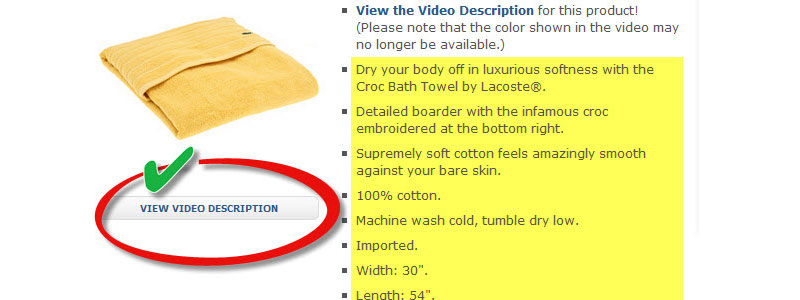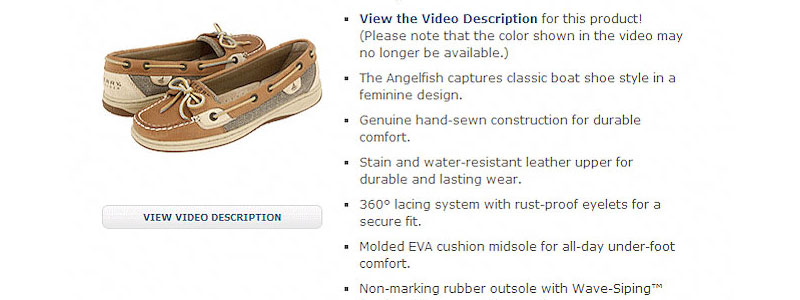BLOG
8 Tips to Writing Persuasive Sales Copy
Joe Sugarman, one of the greatest direct response copywriters of all times, explains that persuasive sales copy should flow like a conversation. Each sentence answering a reader’s objection or question. As the readers goes through the ad, one line after the other, it’s going through what he calls: the “slippery slide”.
Has this happened to you? This is when you just can’t stop reading.
And even though today the internet is an attention grabbing contest, some of the same copywriting tips and techniques apply. But now, we write for the web. Call it conversion copywriter or SEO copywriter, your web copy starts at the very first touchpoint and should drive your future clients all the way through your sales funnel.
Persuasive writing for the online market
Online shopping has become a substantial part in a customer’s journey.
This has opened up a whole new door for stores and sellers to attract new customers in a fresh, engaging way. Without the usual catalogues and advertising, online stores have had to devise new strategies to sell their products.
As such, it is now more important than ever to make sure that your web copy is able to appeal to the online market. With so much emphasis on SEO and keywords, people are so intent on getting the attention of the search engines. When they should be aiming to grab the interest of the online visitors.
If you’re running an online shop or you’re writing product descriptions, here are a few tips that can help you write better content to attract both search engines and potential buyers.
1- Write product descriptions as a catalogue instead of web copy
The difference between a catalogue copy and a web copy is simple. Web copies focus on writing for search engines. That includes including the right amount of keywords, adjectives and specifications.
Web copy aims to gain visibility by using all the relevant keywords they can to rank higher on search engines. Catalogue copies, are more concerned about what the readers read and how they feel about it.
You should still incorporate SEO and all those techniques, but prioritise using words that would appeal to readers.
2- Get to know your audience and write for them
Know their demographics, the words they’re likely to find appealing, and the thoughts you’d want them to have about your product.
If possible, use slang, analogies or other writing techniques that your demographic would find interesting and enticing. For example, writing for professionals and corporate employees would be very different from writing for teenage fashion-loving students.
3- Understand the brand’s voice and values
Aside from the audience, it’s equally important that you also know your brand, what it represents and the voice it uses.
Is your brand an authority with a professional persona? Or more of a fun and carefree brand that appeals to the younger crowd? Is your brand meant to be seen as a wholesome and family-friendly brand?
Ask your client for a copy that would represent the brand, a visualization of the persona of the brand and the persona’s voice. For instance, the persona can be a beautiful glamorous woman, an internet-savvy professional or even an affluent businessman. Read the copy you’ve written in the voice of the persona to see if it sounds like something he or she would say.
4- Copy that sells has answers to pain points
What problems does the product solve? How is it any different from the competence? Does it provide an effective solution to the buyer’s problem?
Of course, the buyer is after the product’s features and benefits. So bank on this by telling the customer why they should buy the product.
For instance, instead of simply saying that a shoe has heavy duty treads, mention that it can be used for long hikes and camping trips.
5- Keep your descriptions and web copy simple
Adding different adjectives and adverbs allow you to show the many different benefits of your product. Using too many adjectives and adverbs would only serve to confuse your customer with a string of positive words. Remember, if it’s obvious, you don’t need to state it. Also, use only one adjective per noun and one adverb per verb. Lastly, avoid using overused and bland-sounding words. Awesome, fantastic, great or good should be avoided when possible. Try to tap into the reader’s senses by using words like fragrant, citrusy, smooth, velvety, or radiant.

Keep the writing positive and appealing, but not personal
Sometimes, writers insert their personal opinions into their descriptions. When you are listing the benefits of a product, is key to avoid this as it may sound too flattering on untrue.
In addition, you should try to add a personal touch by making the words flow instead of making them sound like robotic statements.
6- Add variety to your words
It’s always a good idea to use different sentence structures and different words in order to describe a product. Don’t keep using the same word to start your sentences, and don’t keep using simple sentences in the description.
If you’d like to stress the usefulness of a product, use other words like practical, helpful or functional. Use a thesaurus, but don’t use words that are too extravagant or uncommon.

7 -It has to be easy to read
Make sure that the description you’ve written will appeal to the reader. Write like you would for a catalog, keeping the reader’s needs in mind. Use short paragraphs as opposed to big chunks of words to keep the reader interested. Try to limit each paragraph to three or four lines, and the rest can be in list format. Lastly, make your sentences sound natural and allow your statements to flow into each other by connecting them or ordering them coherently.
8 – Beware of the SEO Copywriter
Many writers focus too much on optimising the text for search engines that they end up sounding robotic, bland, and redundant.
Avoid this by carefully selecting the most relevant keywords. Creating your copy around them is good, as nowadays google’s algorithm knows better how to identify topics beyond the exact words. How you optimise the meta information is now very relevant, another reason to avoid keyword staffing.
You can also avoid this by adding in the chosen keywords after you’ve written your initial description.
Sometimes writers sacrifice readability for optimisation. And though this may work to help your product rank higher in search engines, it may deter readers from considering your product as the description doesn’t speak to them.
Whether you’re selling products or your personal brand, great web copy is among the most important things in your business. Make your copy and products worth your buyer’s attention and energy. Make it easy for them to go through the “slippery slide” of your sales funnel or product catalogue.
Writing clever, succinct web copy is definitely the way to give your products, website, and whole business an extra dash of pizzazz!













